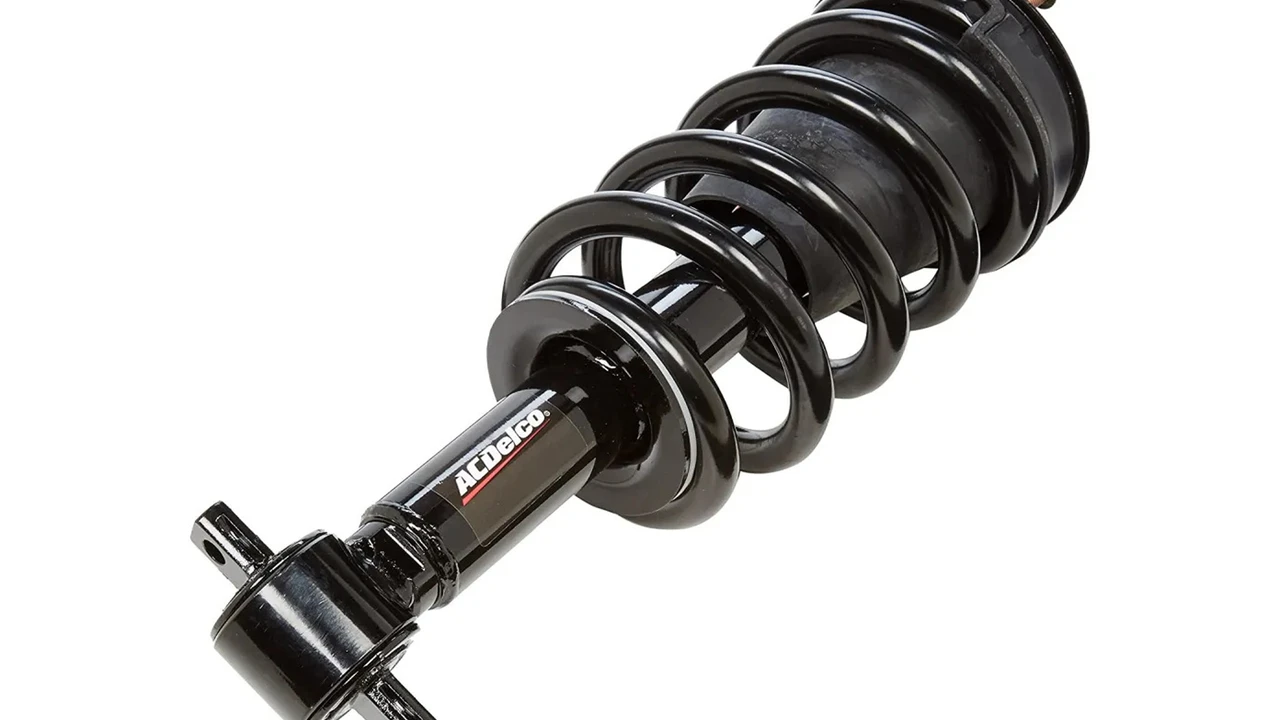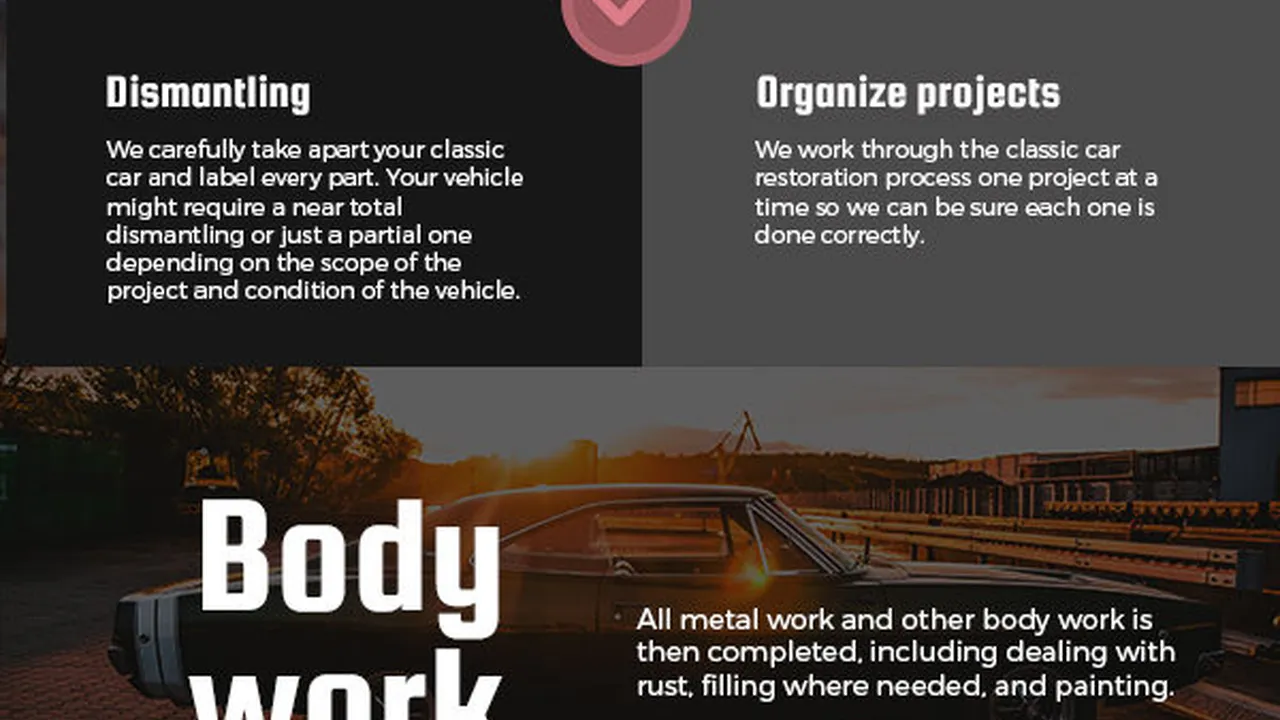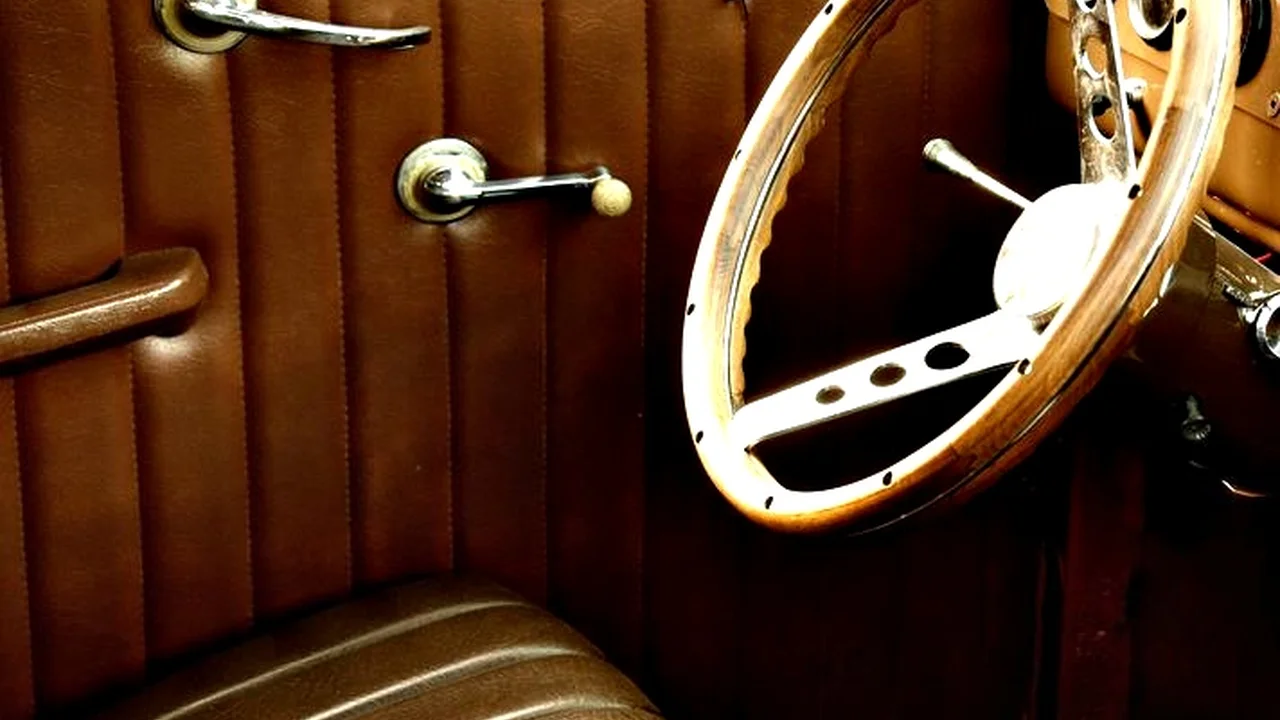Proper Storage Techniques for Classic Cars
Understand proper storage techniques for classic cars to prevent damage and deterioration. Protect your car from the elements and maintain its value. Ensure your car is ready for the road when you are.

Why Proper Classic Car Storage Matters Classic Car Preservation
So, you've got yourself a beautiful classic car. Congratulations! But owning a classic isn't just about cruising down memory lane; it's also about preserving a piece of automotive history. One of the most crucial aspects of preservation? Proper storage. Think of it like this: you wouldn't leave a priceless painting out in the rain, would you? The same goes for your classic car. Improper storage can lead to a whole host of problems, from rust and corrosion to deteriorated interiors and mechanical failures. We're talking about damage that can seriously devalue your car and cost you a fortune to repair.
Preparing Your Classic Car for Long Term Storage Classic Car Prep
Before you tuck your beauty away, you need to do some prep work. This isn't just about throwing a cover over it and hoping for the best. Think of it as giving your car a spa day before its long nap.
Cleaning is Key Classic Car Cleaning
Start with a thorough wash and wax. Get rid of all the dirt, grime, and bird droppings. These can actually damage your paint over time. Pay special attention to the undercarriage, wheel wells, and any areas prone to rust. A good quality car wash soap and wax will do the trick. Consider using a clay bar to remove embedded contaminants for a super smooth finish. Don't forget to clean the interior, too. Vacuum the carpets, wipe down the seats, and clean the dashboard. A clean interior will help prevent mold and mildew growth.
Fluid Changes Essential Classic Car Maintenance
Old fluids can become corrosive and damage your engine and other components. Change the oil, coolant, brake fluid, and transmission fluid. Use the correct type of fluids for your car's make and model. Consult your owner's manual or a trusted mechanic for recommendations. Fill the gas tank and add a fuel stabilizer. This will prevent the fuel from going bad and clogging up your fuel system. Fuel stabilizers like Sta-Bil are readily available at auto parts stores.
Battery Care Classic Car Battery Storage
Batteries tend to drain when left unused for extended periods. Disconnect the battery cables to prevent drain. Consider using a battery tender or trickle charger to keep the battery charged. A battery tender will automatically charge the battery when it gets low and then shut off when it's full. This will help prolong the life of your battery.
Tire Protection Classic Car Tire Care
Tires can develop flat spots if they sit in the same position for too long. Inflate the tires to the maximum recommended pressure. You can also place the car on jack stands to take the weight off the tires completely. If you can't use jack stands, move the car slightly every few weeks to prevent flat spots.
Critter Control Classic Car Pest Prevention
Mice and other rodents love to make nests in cars that are stored for long periods. Place mothballs or dryer sheets inside the car to deter them. You can also use mouse traps or ultrasonic pest repellers. Seal any openings in the car, such as windows and vents, to prevent rodents from getting inside.
Choosing the Right Storage Location Classic Car Garage Storage
Where you store your classic car is just as important as how you prepare it. Here are some options, along with their pros and cons:
The Ideal Scenario: Climate Controlled Garage Classic Car Climate Control
A climate-controlled garage is the gold standard for classic car storage. It protects your car from the elements and keeps the temperature and humidity constant. This will prevent rust, corrosion, and other damage. Of course, this is also the most expensive option.
The Runner Up: Standard Garage Classic Car Garage
A standard garage is a good option if you don't have a climate-controlled garage. Make sure the garage is well-ventilated and insulated. This will help prevent moisture buildup. Keep the garage clean and free of clutter. Store your car away from direct sunlight.
Outdoor Storage: Last Resort Classic Car Outdoor Storage
Outdoor storage should be your last resort. The elements can wreak havoc on your classic car. If you have to store your car outdoors, use a high-quality car cover that is specifically designed for outdoor use. Make sure the cover is breathable to prevent moisture buildup. Park the car in a shaded area if possible.
Essential Storage Products for Classic Cars Classic Car Storage Products
Investing in the right storage products can make a big difference in protecting your classic car.
Car Covers: Protection from the Elements Classic Car Cover
A good car cover is essential, especially if you're storing your car outdoors. Look for a cover that is breathable, waterproof, and UV resistant.
- Covercraft Weathershield HP: This is a premium car cover that offers excellent protection from the elements. It's made from a lightweight, breathable fabric that is also waterproof and UV resistant. It's a bit pricey, around $400-$600 depending on the car model, but worth the investment if you want the best protection.
- Budge Industries Budge Lite Car Cover: This is a more affordable option that still provides good protection from the elements. It's made from a water-resistant fabric and is easy to install. It typically costs around $50-$100.
- California Car Cover Company Superweave: Another excellent choice, known for its durability and breathability. Offers great protection against sun, rain, and dust. Prices range from $350-$550.
Battery Tenders: Keeping the Power On Classic Car Battery Tender
A battery tender will keep your battery charged and prevent it from going dead during storage.
- Battery Tender Plus: This is a popular battery tender that is easy to use and provides reliable charging. It's also relatively affordable, around $50-$70.
- NOCO Genius1: A smart battery charger and maintainer that can automatically detect and charge different battery types. It's compact and easy to use, priced around $30-$50.
- CTEK 40-206 MXS 5.0 Battery Charger: A more advanced charger with multiple charging modes and temperature compensation. Offers excellent performance and reliability, typically priced between $80-$120.
Fuel Stabilizers: Preventing Fuel Degradation Classic Car Fuel Stabilizer
A fuel stabilizer will prevent your fuel from going bad and clogging up your fuel system.
- Sta-Bil Fuel Stabilizer: This is a popular fuel stabilizer that is effective at preventing fuel degradation. It's also relatively affordable, around $10-$15 per bottle.
- Lucas Oil Fuel Stabilizer: Another excellent choice, known for its cleaning and lubricating properties in addition to stabilizing fuel. Priced similarly to Sta-Bil.
Tire Savers: Preventing Flat Spots Classic Car Tire Protection
Tire savers will prevent your tires from developing flat spots during storage.
- Race Ramps RR-FS FlatStoppers: These tire savers are designed to distribute the weight of your car evenly across the tires. They're a bit pricey, around $200-$300 per set, but they're a good investment if you want to protect your tires.
- Simple Foam Pads: A more budget-friendly option. While not as effective as dedicated tire savers, placing thick foam pads under the tires can help distribute weight and reduce the risk of flat spots. These can cost as little as $20-$50.
Moisture Absorbers: Fighting Humidity Classic Car Humidity Control
Moisture absorbers will help prevent moisture buildup inside your car.
- DampRid: This is a popular moisture absorber that is easy to use and effective at preventing moisture buildup. It's also relatively affordable, around $10-$20 per container.
- Eva-dry E-333 Renewable Mini Dehumidifier: A compact and rechargeable dehumidifier that's ideal for smaller spaces. It absorbs moisture from the air and can be easily renewed by plugging it into an outlet. Prices range from $20-$40.
Regular Check-Ups During Storage Classic Car Maintenance During Storage
Just because your car is in storage doesn't mean you can forget about it completely. It's important to check on it periodically to make sure everything is okay.
Start the Engine Periodically Classic Car Engine Start-Up
Start the engine every few weeks and let it run for about 15-20 minutes. This will help circulate the fluids and prevent the engine from seizing up. Make sure the garage is well-ventilated when you do this.
Inspect for Leaks and Damage Classic Car Inspection
Check for any leaks or damage. Look for leaks under the car and check the tires for flat spots. Inspect the interior for mold and mildew.
Maintain the Battery Charge Classic Car Battery Maintenance
If you're using a battery tender, make sure it's working properly. Check the battery voltage periodically to make sure it's staying charged.
Common Mistakes to Avoid During Classic Car Storage Classic Car Storage Mistakes
Even with the best intentions, it's easy to make mistakes when storing a classic car. Here are some common pitfalls to avoid:
Skipping the Prep Work Classic Car Preparation
Don't skip the prep work! It's tempting to just throw a cover over your car and forget about it, but this can lead to serious problems down the road.
Using the Wrong Car Cover Classic Car Cover Selection
Don't use a cheap, non-breathable car cover. This can trap moisture and cause rust.
Ignoring the Battery Classic Car Battery Neglect
Don't let the battery go dead. This can damage the battery and require you to replace it.
Neglecting Pest Control Classic Car Pest Control
Don't forget about pest control. Rodents can cause serious damage to your car's wiring and interior.
Ignoring Regular Check-Ups Classic Car Check-Ups
Don't forget to check on your car periodically. This will help you catch any problems early on.
Recommissioning Your Classic Car After Storage Classic Car Recommissioning
After a long period of storage, it's important to recommission your classic car properly before hitting the road. This involves more than just turning the key and driving away.
Thorough Inspection Essential Inspection
Start with a thorough inspection. Check all the fluids, tires, and belts. Look for any signs of leaks or damage.
Replace Fluids and Filters Fluid Replacement
Replace all the fluids and filters, even if you changed them before storage. This will ensure that your car is running smoothly and efficiently.
Check the Brakes Brake Check
Check the brakes to make sure they're working properly. Inspect the brake pads and rotors for wear. Bleed the brake lines to remove any air or moisture.
Test Drive Carefully Test Drive
Take your car for a test drive to make sure everything is working properly. Start with a short drive and gradually increase the distance. Listen for any unusual noises or vibrations.
By following these proper storage techniques, you can protect your classic car from damage and deterioration and ensure that it's ready for the road whenever you are. Happy motoring!
:max_bytes(150000):strip_icc()/277019-baked-pork-chops-with-cream-of-mushroom-soup-DDMFS-beauty-4x3-BG-7505-5762b731cf30447d9cbbbbbf387beafa.jpg)






